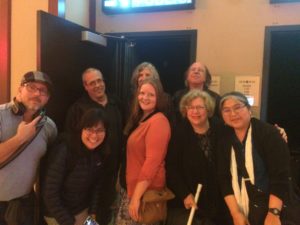Answering reference questions is the bread and butter of what many of us do as librarians. But rarely do we in the Social Sciences Division get the kinds of questions that Emilio Estevez portrayed in his 2018 film The Public. *
In fact, we believe that there are no “dumb” questions and will gladly help our patrons with any of their information needs. More often than not, our patrons have deep and complex research needs that challenge our expertise (and make our jobs fun) and require the collective knowledge and experience of our colleagues.
Take, for example, this query that came in:
“What is the cost of the social safety net in the US?”
To effectively answer this query we engaged in a dialogue with the researcher (what’s known as the “reference interview” in library-speak). In a case like this we want to: determine what kind of data they are hoping to find; determine specific geographic and time constraints; and clarify what, exactly, they mean by social safety net. Are they talking about public/government spending? What about private and philanthropic spending on the social safety net? Do they mean support for low-income people specifically, or all of society?
Jim Church, Librarian for Economics, Political Economy, and International Government Information, suggested OECD Stats which contains statistics by country from the multinational Organisation for Economic Co-operation and Development. OECD Stats has a section for Social Protection and Well Being including, among other things, pensions, sick leave, disability, unemployment, housing assistance, etc. Users can go to Social Expenditure – Detailed Data: United States.
Susan Edwards, Social Welfare Librarian and Head of the Social Sciences Division, suggested that for US data on the federal side, the Green Book provides statistical data of the major entitlement programs (Social Security, Medicare, Temporary Assistance for Needy Families, etc.) overseen by the Committee on Ways and Means. If, however, the researcher is looking into private and philanthropic spending on the social safety net, they can consult GuideStar and the Foundation Directory which provide information about the budgets of a wide range of nonprofit organizations and public charities.
Ann Glusker, Sociology, Demography, & Quantitative Research Librarian, suggested that the researcher remember to consider “grey literature”, which may not appear in peer-reviewed journals or formal publications, but which comes from reputable and reliable sources and which can add a lot to the published literature. In this case, the researcher may want to consult offerings and also staff in Berkeley’s Center for Comparative Family Welfare and Poverty Research, or Stanford’s Center on Poverty & Inequality, which has a page devoted to Safety Net Use.
Monica Singh, Business Librarian, suggested the researcher look at a couple of very helpful guides created by Jesse Silva, Scholarly Resources Strategy and Federal Government Information Librarian; Getting Started with the US Census has a tab on Social/Economic Census Sources.
A happy ending? We never saw the end result of the person’s research. We often send researchers on their way and don’t know how they use the information we’ve provided. But, considering we receive many return visits we must be doing something right.

* Note: members of the Social Sciences Division went on a field trip to see The Public when it was playing in the theaters. While we gave Emilio Estevez an “A” for good intentions, some of us wish we’d been able to make suggestions about the dialogue and plot!